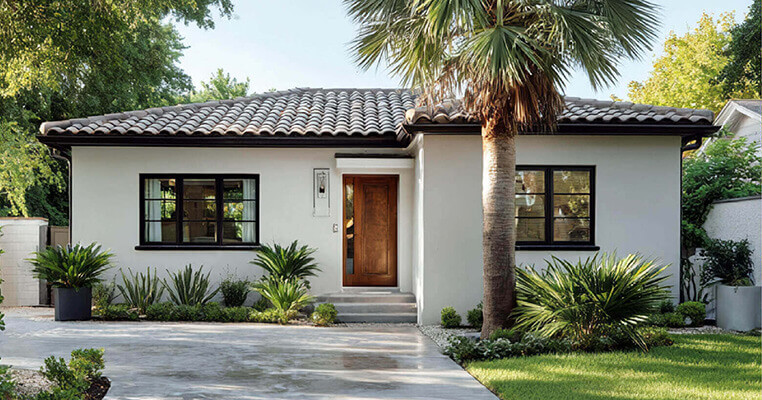What is a second home?
A second home is a property you own in addition to your primary home. It might be a beach cottage or a mountainside cabin that you use as a vacation home. Some people rent out their second homes when they’re not using them.
For many, second homes are also future retirement spots. Your vacation home can give you a taste of life after work while allowing you to maintain your roots.
Here’s a look at how second homes compare to investment properties and what you can do with your vacation spot when you aren’t living there.
Second home vs. investment property
The key difference between a second home and an investment property is your intentions. Investment properties are bought solely to generate rental income or profit through resale. Flips are a common type of investment property.
Lenders also treat second homes and investment properties differently. Mortgage companies expect investment properties to either generate rental income or yield a significant profit in the short term. However, they recognize the financial risk of these properties and impose stricter requirements, like high down payments.
Mortgage companies realize that people who are buying second homes intend to keep them long-term, but they also understand that second home mortgages are riskier than those for primary homes. Lenders expect these buyers to have their finances in order.
The good news is that there are several financing options available if you won’t be using the home as your primary residence.
Can I rent out my second home?
Yes, you can rent out your second home for part of the year. However, restrictions may apply. Many lenders allow short-term rentals, but traditional homeowners insurance does not cover business use cases, including short-term property rentals. You may need to purchase additional insurance coverage.
Discuss your plans with a CrossCountry Mortgage loan officer to choose the best financing option for how you intend to use your home. One of our experienced team members can explain everything, including what type of loan is right for you and what insurance coverage you will need.
Buying a second home
Are you ready to take on a payment for a second home? Here’s what you need to do next.
1. Check your finances
Before checking out homes for sale, assess your financial health. Many of the same
debt-to-income (DTI) rules apply when buying a second home.
A DTI below 45% and a strong credit score will help you qualify. Factor in the mortgage payment for your primary home and the new payment for a second home when calculating your DTI.
Once you’ve considered the long-term financial implications of buying another home, look at your savings. You should be able to comfortably afford the down payment and closing costs. Mortgage interest, homeowners insurance, and property taxes will have a big impact on your monthly payments, so make sure to account for these costs as well.
2. Calculate down payment
Second home down payments typically range from 10% to 20%. You won’t be eligible to use a USDA, FHA, or VA loan to reduce your down payment. These programs are only available when a home will be used as your primary residence. Therefore, you’ll need to explore other options, such as a conventional mortgage.
You should also anticipate paying closing costs of around 2% to 5% of the loan amount. Let’s say that you’re looking for a dream vacation home on a secluded lake. You find a few promising properties that are priced at around $400,000. This means you’ll need $40,000 to $80,000 for a down payment and an additional $8,000 to $20,000 for closing costs.
Tapping into a home equity line of credit or loan from your primary residence can help. Use CrossCountry Mortgage’s mortgage calculator to crunch the numbers.
3. Explore mortgage options
Next, work with a mortgage lender to explore your options for financing a second home, such as:
- Conventional loans
- Cash-out refinance
- Home equity loans
A conventional loan is a great option if you have enough savings to cover your down payment and closing costs. Keep in mind that your lender may charge slightly higher interest rates due to added risk.
If you own your primary home outright or almost have it paid off, you may have a lot of equity that you can tap into. In this case, a home equity loan or cash-out refinance could cover the down payment and closing costs on your second home. You might even have enough equity to pay for the vacation property in cash.
4. Find a home
Partner with a real estate agent experienced in your desired market. They’ll help you find a vacation home or future retirement spot that checks all the boxes. Consider location, amenities, and potential rental income if you plan to rent out the property part of the year.
5. Make an offer
Once you find the perfect second home, work with your real estate agent to submit a competitive offer. Consider local market trends and property conditions. Your agent will help you negotiate terms, including the price and contingencies like inspections or repairs.
Here’s where your earlier decisions will pay off. The hands-on loan team at CrossCountry Mortgage will set you up for a smooth purchasing process. Our team collaborates with real estate agents to get you to the closing table on time. We keep you in the loop from start to finish to ensure your financing aligns with the offer.
6. Close on the home
During the closing process, you’ll submit your down payment and any other cash required to finalize the deal. This might include title insurance, appraisal fees, taxes, and an escrow deposit. You should receive a detailed breakdown of these costs at least a few days before closing.
While most closings happen in person, you can also opt for a remote notary service if you aren’t able to travel.
Second home mortgage loans
How will you fund your second home? Here’s what you should know about the three main options.
Conventional loan
A conventional loan is the go-to choice for most vacation property purchases. These loans require a 10% to 20% down payment and a strong credit score. You’ll also need a DTI below 45%.
Interest rates on conventional loans may be slightly higher, especially compared to options like FHA or USDA loans. However, the terms are generally flexible. You can opt for a shorter 15-year fixed-rate mortgage, for example, or a traditional 30-year term.
If you have plenty of savings and you don’t want to use the equity in your primary residence, a conventional loan is the way to go. It’s a straightforward process that can make second home ownership attainable. Just remember the budget for your down payment and closing costs when shopping for your vacation destination.
Cash-out refinance
A cash-out refinance taps into your primary home’s equity to fund your second home. You refinance your existing mortgage for more than you owe and take the difference in cash. Most lenders allow you to unlock up to 80% of your home’s value, but that figure includes the existing mortgage balance.
If you have a lot of equity, you can cash out enough to cover the down payment on your new home. You may even be able to buy the second home outright.
Home equity loan
A home equity loan or HELOC uses your primary home’s equity as collateral. You can obtain a lump-sum payment or a flexible line of credit to use for the down payment on your second home. Home equity loans have fixed rates, while HELOCs offer variable rates.
Talk to a CCM loan officer today!
Are you ready to buy your second home? CrossCountry Mortgage is here to help.
Contact one of our loan officers today, and let’s turn your dream of owning a vacation home into a reality!





